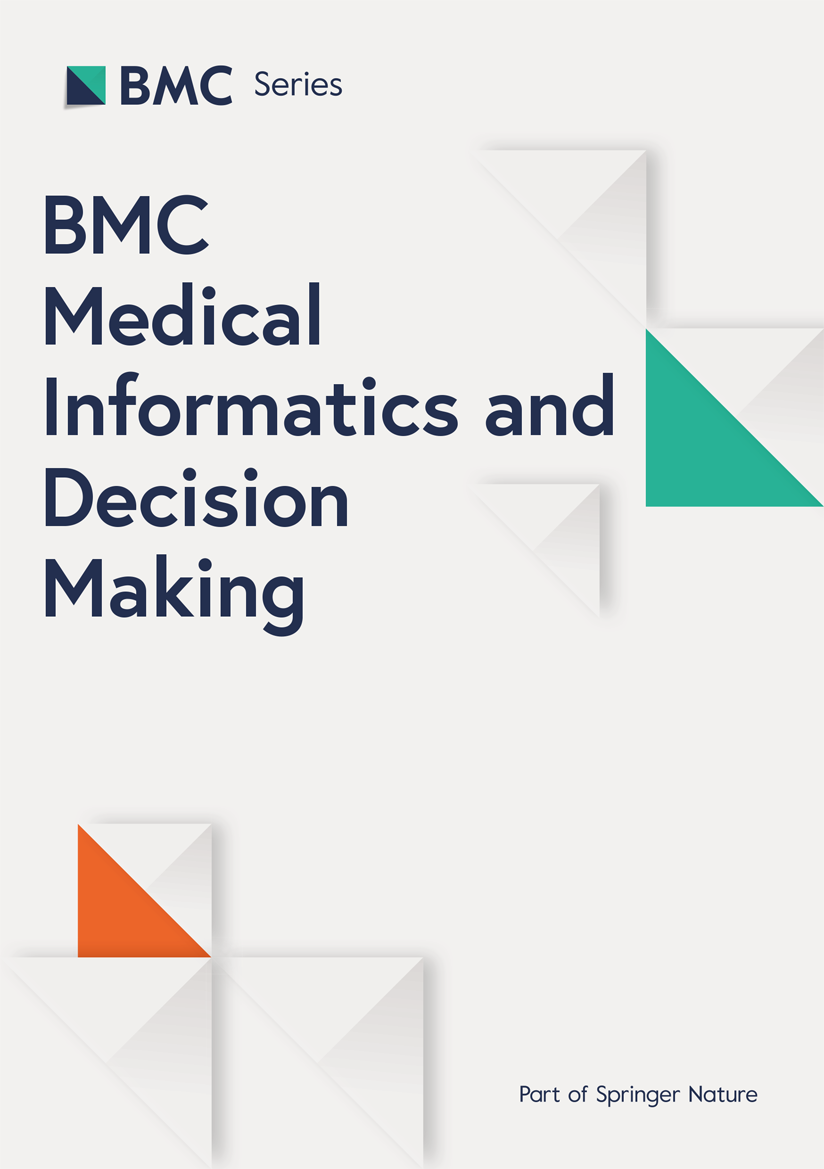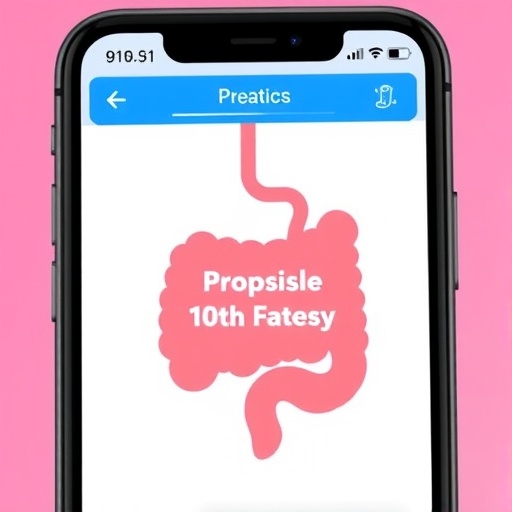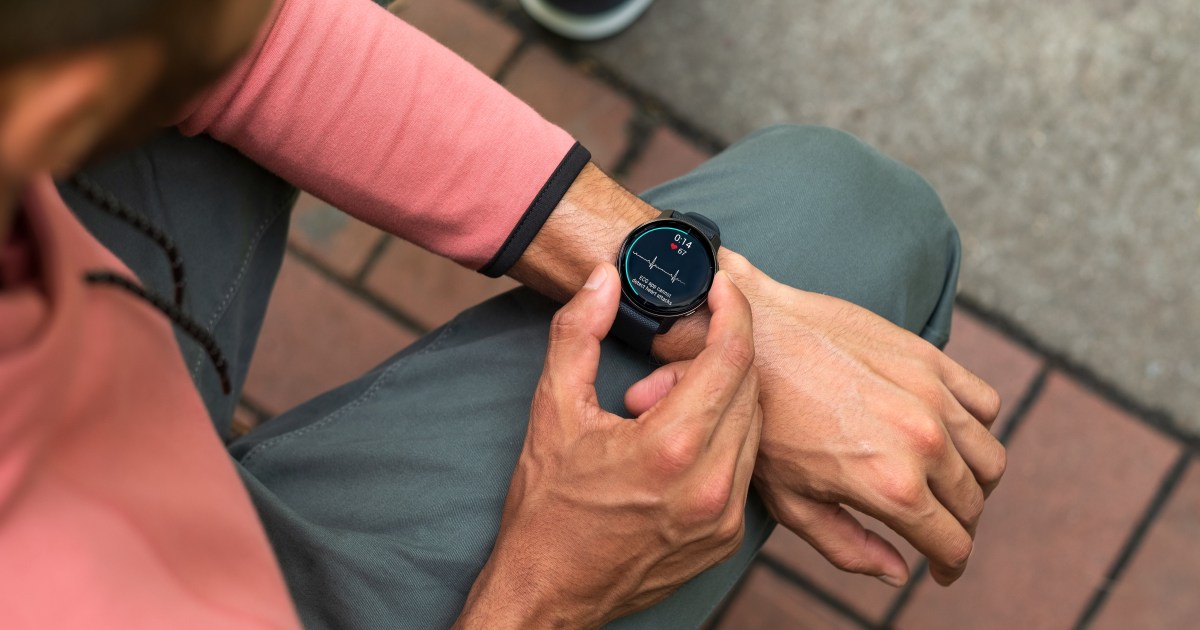Cost-effectiveness analysis of mHealth applications for depression in Germany using a Markov cohort simulation

Vigo, D., Thornicroft, G. & Atun, R. Estimating the true global burden of mental illness. Lancet Psychiatry 3, 171–178 (2016).
Google Scholar
World Health Organization Regional Office for Europe. WHO European Framework for Action on Mental Health 2021–2025. (2022).
Robert Koch-Institut. Gesundheit in Deutschland. Gesundheitsberichterstattung des Bundes. (2015).
Bundesministerium für Bildung und Forschung. Depression: Schatten auf der Seele. (2023).
Porst, M. et al. The burden of disease in Germany at the national and regional level. Dtsch Arztebl Int 119, 785–792 (2022).
Google Scholar
Rabe-Menssen, C., Hübner, L. & Maaß, E. Report Psychotherapie 2023. Sonderausgabe psychische Gesundheit in der COVID-19-Pandemie. (2023).
DAK Gesundheit. Psychreport 2023. Entwicklungen der psychischen Erankungen im Job: 2012-2022. (2023).
Grobe, T. G., Braun, A. & Starke, P. BARMER Gesundheitsreport 2023. Risikofaktoren für psychische Erkrankungen, Schriftenreihe zur Gesundheitsanalyse – Band 41. (2023).
Barak, A., Hen, L., Boniel-Nissim, M. & Shapira, N. A comprehensive review and a meta-analysis of the effectiveness of internet-based psychotherapeutic interventions. J. Technol. Hum. Serv. 26, 109–160 (2008).
Karyotaki, E. et al. Do guided internet-based interventions result in clinically relevant changes for patients with depression? An individual participant data meta-analysis. Clin. Psychol. Rev. 63, 80–92 (2018).
Google Scholar
Klein, J. P. et al. Effects of a psychological internet intervention in the treatment of mild to moderate depressive symptoms: Results of the EVIDENT study, a randomized controlled trial. Psychother. Psychosom. 85, 218–228 (2016).
Google Scholar
Amelung, V., Nüsken, J. & Ledeganck, M. BMC-Innovationspanel. (2021).
Brönneke, J. B., Hagen, J., Kircher, P. & Matthies, H. Digitalisierte Gesundheitsversorgung im Jahr 2030 – ein mögliches Szenario. Bundesgesundheitsblatt Gesundheitsforsch. Gesundheitsschutz 64, 1285–1291 (2021).
Uncovska, M., Freitag, B., Meister, S. & Fehring, L. Patient acceptance of prescribed and fully reimbursed mHealth apps in Germany: An UTAUT2-based online survey study. J. Med. Syst. 47, 14 (2023).
Google Scholar
Firth, J. et al. Can smartphone mental health interventions reduce symptoms of anxiety? A meta-analysis of randomized controlled trials. J. Affect Disord. 218, 15–22 (2017).
Google Scholar
Lingg, M. & Lütschg, V. Health system stakeholders’ perspective on the role of mobile health and its adoption in the swiss health system: Qualitative study. JMIR Mhealth Uhealth 8, e17315 (2020).
Google Scholar
Hemkens, L. G. Nutzenbewertung digitaler Gesundheitsanwendungen – Herausforderungen und Möglichkeiten. Bundesgesundheitsblatt Gesundheitsforsch. Gesundheitsschutz 64, 1269–1277 (2021).
Dahlhausen, F. et al. There’s an app for that, but nobody’s using it: Insights on improving patient access and adherence to digital therapeutics in Germany. Digit Health 8, 20552076221104672 (2022).
Google Scholar
Morton, K. et al. Using digital interventions for self-management of chronic physical health conditions: A meta-ethnography review of published studies. Patient Educ. Couns. 100, 616–635 (2017).
Google Scholar
Dahlhausen, F. et al. Physicians’ attitudes toward prescribable mHealth apps and implications for adoption in Germany: Mixed methods study. JMIR Mhealth Uhealth 9, e33012 (2021).
Google Scholar
Uncovska, M., Freitag, B., Meister, S. & Fehring, L. Rating analysis and BERTopic modeling of consumer versus regulated mHealth app reviews in Germany. NPJ Digit Med. 6, 115 (2023).
Google Scholar
Schmidt, L., Pawlitzki, M., Renard, B. Y., Meuth, S. G. & Masanneck, L. The three-year evolution of Germany’s digital therapeutics reimbursement program and its path forward. NPJ Digit Med. 7, 139 (2024).
Google Scholar
Bundesinstitut für Arzneimittel und Medizinprodukte. DiGA-Verzeichnis. (2024).
Krämer, R., Köhne-Volland, L., Schumacher, A. & Köhler, S. Efficacy of a web-based intervention for depressive disorders: Three-arm randomized controlled trial comparing guided and unguided self-help with waitlist control. JMIR Form. Res. 6, e34330 (2022).
Google Scholar
Haaf, R., Machleid, F. & Köhler, S. Überblick über digitale Gesundheitsanwendungen mit Fokus Depression. Nervenheilkunde 42, 430–437 (2023).
Haaf, R. et al. Wirksamkeit in Deutschland verfügbarer internetbasierter Interventionen für Depressionen – ein systematisches Review mit Metaanalyse. Nervenarzt 95, 206–215 (2024).
Google Scholar
Bratan, T. et al. E-Health in Deutschland. Entwicklungsperspektiven und internationaler Vergleich. (2022).
Barros, P. P. et al. Assessing the Impact of Digital Transformation of Health Services. (2019).
Zanaboni, P. et al. Methods to evaluate the effects of internet-based digital health interventions for citizens: systematic review of reviews. J. Med Internet Res. 20, e10202 (2018).
Google Scholar
Iribarren, S. J., Cato, K., Falzon, L. & Stone, P. W. What is the economic evidence for mHealth? A systematic review of economic evaluations of mHealth solutions. PLoS One 12, e0170581 (2017).
Google Scholar
Kolasa, K. & Kozinski, G. How to value digital health interventions? A systematic literature review. Int. J. Environ. Res. Public Health 17, 2119 (2020).
Google Scholar
Bates, D. W., Landman, A. & Levine, D. M. Health apps and health policy: What is needed? JAMA 320, 1975–1976 (2018).
Google Scholar
Owens, D. K., Qaseem, A., Chou, R. & Shekelle, P. High-value, cost-conscious health care: Concepts for clinicians to evaluate the benefits, harms, and costs of medical interventions. Ann. Intern. Med. 154, 174–180 (2011).
Google Scholar
Powell, A. & Torous, J. A patient-centered framework for measuring the economic value of the clinical benefits of digital health apps: Theoretical modeling. JMIR Ment. Health 7, e18812 (2020).
Google Scholar
Luo, X. et al. Cost-effectiveness of mobile health-based integrated care for atrial fibrillation: Model development and data analysis. J. Med. Internet Res. 24, e29408 (2022).
Google Scholar
Lewkowicz, D., Wohlbrandt, A. M. & Bottinger, E. Digital therapeutic care apps with decision-support interventions for people with low back pain in Germany: Cost-effectiveness analysis. JMIR Mhealth Uhealth 10, e35042 (2022).
Google Scholar
Abadie, F. & Boehler, C. Monitoring and Assessment Framework for the European Innovation Partnership on Active and Healthy Ageing (MAFEIP). (2015).
Boehler, C., De Graaf, G., Steuten, L., Yang, Y. & Abadie, F. Development of a web-based tool for the assessment of health and economic outcomes of the European innovation partnership on active and healthy ageing (EIP on AHA). BMC Med Inf. Decis. Mak. 15, S4 (2015).
Mukuria, C. et al. Cost-effectiveness of an improving access to psychological therapies service. Br. J. Psychiatry 202, 220–227 (2013).
Google Scholar
Hollinghurst, S. et al. Cost-effectiveness of cognitive–behavioural therapy as an adjunct to pharmacotherapy for treatment-resistant depression in primary care: Economic evaluation of the CoBalT Trial. Br. J. Psychiatry 204, 69–76 (2014).
Google Scholar
Zethraeus, N., Johannesson, M., Jönsson, B., Löthgren, M. & Tambour, M. Advantages of using the net-benefit approach for analysing uncertainty in economic evaluation studies. Pharmacoeconomics 21, 39–48 (2003).
Google Scholar
Rommel, A., Bretschneider, J., Kroll, L. E., Prütz, F. & Thom, J. Inanspruchnahme psychiatrischer und psychotherapeutischer Leistungen. Individuelle Determinanten und regionale Unterschiede. J. Health Monit. 2, 3–23 (2017).
Google Scholar
Messner, E.-M., Probst, T., O’Rourke, T., Stoyanov, S. & Baumeister, H. mHealth applications: Potentials, limitations, current quality and future directions. In Digital Phenotyping and Mobile Sensing. New Developments in Psychoinformatics (eds. by Baumeister, H. & Montag, C.) (Springer International Publishing 2019), pp. 235–248.
Kolovos, S. et al. Cost effectiveness of guided internet-based interventions for depression in comparison with control conditions: An individual-participant data meta-analysis. Depress Anxiety 35, 209–219 (2018).
Google Scholar
Ahlert, M., Breyer, F. & Schwettmann, L. What You Ask is What You Get: Willingness-to-Pay for a QALY in Germany. (2013).
Schwarzer, R. et al. Systematic overview of cost-effectiveness thresholds in ten countries across four continents. J. Comp. Eff. Res. 4, 485–504 (2015).
Google Scholar
IQWiG. General Methods. Version 7.0. (2023).
Gensorowsky, D., Witte, J., Batram, M. & Greiner, W. Market access and value-based pricing of digital health applications in Germany. Cost. Eff. Resour. Alloc. 20, 25 (2022).
Google Scholar
Groene, N. & Schneck, L. Covering digital health applications in the public insurance system: How to foster innovation in patient care while mitigating financial risks – evidence from Germany. Front Digital Health 5, 1217479 (2023).
Greiner, W. & Gensorowsky, D. DiGA-Report 2022. (2022).
Gräfe, V., Moritz, S. & Greiner, W. Health economic evaluation of an internet intervention for depression (deprexis), a randomized controlled trial. Health Econ. Rev. 10, 19 (2020).
Google Scholar
GKV Spitzenverband. Bericht des GKV-Spitzenverbandes über die Inanspruchnahme und Entwicklung der Versorgung mit Digitalen Gesundheitsanwendungen (DiGA-Bericht). (2023).
Meskendahl, D. & Bachmann, T. Bericht des Spitzenverbands Digitale Gesundheitsversorgung über die Marktentwicklung digitaler Gesundheitsanwendungen (DiGA-Report). (2023).
Kessler, R. C. et al. The epidemiology of major depressive disorder: Results from the national comorbidity survey replication (NCS-R). JAMA 289, 3095–3105 (2003).
Google Scholar
Haji Ali Afzali, H., Karnon, J. & Gray, J. A critical review of model-based economic studies of depression: modelling techniques, model structure and data sources. Pharmacoeconomics 30, 461–482 (2012).
Google Scholar
Kolovos, S. et al. Model-based economic evaluation of treatments for depression: A systematic literature review. Pharmacoecon Open 1, 149–165 (2017).
Google Scholar
Siebert, U. et al. State-transition modeling: A report of the ISPOR-SMDM modeling good research pactices task force-3. Value Health 15, 812–820 (2012).
Google Scholar
Caro, J. J., Briggs, A. H., Siebert, U. & Kuntz, K. M. Modeling good research practices-overview: A report of the ISPOR-SMDM modeling good research practices task force-1. Value Health 15, 796–803 (2012).
Google Scholar
Husereau, D. et al. Consolidated health economic evaluation reporting standards (CHEERS) statement. BMC Med. 11, 80 (2013).
Google Scholar
Husereau, D. et al. Consolidated health economic evaluation reporting standards 2022 (CHEERS 2022) statement: Updated reporting guidance for health economic evaluations. Value Health 25, 3–9 (2022).
Google Scholar
Sonnenberg, F. A. & Beck, J. R. Markov models in medical decision making: A practical guide. Med Decis. Mak. 13, 322–338 (1993).
Google Scholar
Nübel, J., Müllender, S., Hapke, U. & Jacobi, F. Epidemie der Depression? Prävalenzentwicklung und Inanspruchnahme von Hilfs- und Versorgungsangeboten. Nervenarzt 90, 1177–1186 (2019).
Google Scholar
Wittchen, H.-U. & Jacobi, F. Die Versorgungssituation psychischer Störungen in Deutschland. Bundesgesundheitsblatt Gesundheitsforsch Gesundheitsschutz 44, 993–1000 (2001).
Messori, A. & Trippoli, S. The results of a pharmacoeconomic study: Incremental cost-effectiveness ratio versus net monetary benefit. Heart 103, 1746 (2017).
Google Scholar
Krummenauer, F. & Landwehr, I. Incremental cost effectiveness evaluation in clinical research. Eur. J. Med Res. 10, 18–22 (2005).
Google Scholar
Ulbrich, L. & Kröger, C. Monetary valuation of a quality-adjusted life year (QALY) for depressive disorders among patients and non-patient respondents: A matched willingness to pay study. Clin. Psychol. Eur 3, e3855 (2021).
Google Scholar
Statistisches Bundesamt. Gross domestic product (GDP). (2023).
Incerti, D. & Jansen, J. P. Hesim: Health economic simulation modeling and decision analysis. (2021).
Baio, G. & Dawid, A. P. Probabilistic sensitivity analysis in health economics. Stat. Methods Med. Res. 24, 615–634 (2015).
Google Scholar
Alarid-Escudero, F. et al. An introductory tutorial on cohort state-transition models in R using a cost-effectiveness analysis example. Med Decis. Mak. 43, 3–20 (2023).
Briggs, A. H., Goeree, R., Blackhouse, G. & O’Brien, B. J. Probabilistic analysis of cost-effectiveness models: Choosing between treatment strategies for gastroesophageal reflux disease. Med. Decis. Mak. 22, 290–308 (2002).
Hunink, M. G. M. & Weinstein, M. C. Decision making in health and medicine. Integrating evidence and values 2nd edn, Vol. 446 (Cambridge University Press, Cambridge, 2016).
Carreras, G., Baccini, M., Accetta, G. & Biggeri, A. Bayesian probabilistic sensitivity analysis of Markov models for natural history of a disease: An application for cervical cancer. ijph 9, 3 (2012).
Parmigiani, G. Measuring uncertainty in complex decision analysis models. Stat. Methods Med. Res. 11, 513–537 (2002).
Google Scholar
Kligerman, M. P., Devine, E. E., Bentzley, J. P. & Megwalu, U. C. Cost-effectiveness of depression screening for otolaryngology-head and neck surgery residents. Laryngoscope 131, 502–508 (2021).
Google Scholar
Grobe, T. G. et al. Prävalenzen von Depressionen bei Erwachsenen – eine vergleichende Analyse bundesweiter Survey- und Routinedaten. Gesundheitswesen 81, 1011–1017 (2019).
Google Scholar
Statistisches Bundesamt. Population by nationality and sex (quarterly figures). (2023).
Stahmeyer, J. T. et al. The state of care for persons with a diagnosis of depression. Dtsch Arztebl Int 119, 458–465 (2022).
Google Scholar
Gräfe, K., Zipfel, S., Herzog, W. & Löwe, B. Screening psychischer Störungen mit dem “Gesundheitsfragebogen für Patienten (PHQ-D)”. Diagnostica 50, 171–181 (2004).
Kroenke, K., Spitzer, R. L. & Williams, J. B. The PHQ-9: Validity of a brief depression severity measure. J. Gen. Intern Med. 16, 606–613 (2001).
Google Scholar
Zuithoff, N. P. A. et al. The patient health questionnaire-9 for detection of major depressive disorder in primary care: Consequences of current thresholds in a crosssectional study. BMC Fam. Pr. 11, 98 (2010).
Bundesärztekammer, Kassenärztliche Bundesvereinigung & Arbeitsgemeinschaft der Wissenschaftlichen Medizinischen Fachgesellschaften. Nationale VersorgungsLeitlinie Unipolare Depression. Langfassung, Version 3.1. (2022).
Whisman, M. A. & Richardson, E. D. Normative data on the beck depression inventory-second edition (BDI-II) in college students. J. Clin. Psychol. 71, 898–907 (2015).
Google Scholar
Kocalevent, R.-D., Hinz, A. & Brähler, E. Standardization of the depression screener patient health questionnaire (PHQ-9) in the general population. Gen. Hosp. Psychiatry 35, 551–555 (2013).
Google Scholar
Statistisches Bundesamt. Krankheitskosten: Deutschland, Jahre, Krankheitsdiagnosen (ICD-10), Geschlecht, Altersgruppen. (2023).
Sonntag, M., König, H.-H. & Konnopka, A. The estimation of utility weights in cost-utility analysis for mental disorders: A systematic review. Pharmacoeconomics 31, 1131–1154 (2013).
Google Scholar
Whitehead, S. J. & Ali, S. Health outcomes in economic evaluation: The QALY and utilities. Br. Med Bull. 96, 5–21 (2010).
Google Scholar
Deutsche Bundesbank. Discount Interest Rates. (2023).
Statistisches Bundesamt. Bevölkerung Nach Altersgruppen (ab 2011). Umwelt/Bevoelkerung/Bevoelkerungsstand/Tabellen/liste-altersgruppen.html#474508 (2023).
Statistisches Bundesamt. Sterbefälle – Fallzahlen nach Tagen, Wochen, Monaten, Altersgruppen, Geschlecht und Bundesländern für Deutschland 2016-2023. Umwelt/Bevoelkerung/Sterbefaelle-Lebenserwartung/Tabellen/sonderauswertung-sterbefaelle.html (2023).
Meyer, B. et al. Effects of an Internet intervention (Deprexis) on severe depression symptoms: Randomized controlled trial. Internet Interventions 2, 48–59 (2015).
Moritz, S., Schilling, L., Hauschildt, M., Schröder, J. & Treszl, A. A randomized controlled trial of internet-based therapy in depression. Behav. Res. Ther. 50, 513–521 (2012).
Google Scholar
Moritz, S. et al. Effects of online intervention for depression on mood and positive symptoms in schizophrenia. Schizophr. Res. 175, 216–222 (2016).
Google Scholar
Beiwinkel, T., Eißing, T., Telle, N.-T., Siegmund-Schultze, E. & Rössler, W. Effectiveness of a web-based intervention in reducing depression and sickness absence: Randomized controlled trial. J. Med. Internet Res. 19, e213 (2017).
Google Scholar
Baumeister, A. & Moritz, S. Studienbericht Novego Depression. (2023).
Bundesinstitut für Arzneimittel und Medizinprodukte. Arzneimittel-Festbeträge. (2023).
Wissenschaftliches Institut der AOK. PharMaAnalyst. Verordnungsdaten 2022. (2022).
IGES Institut. Arzneimittelatlas: Die bedeutendsten Mittel mit stimulierender Wirkung auf das Zentralnervensystem (Psychoanaleptika). N06 Psychoanaleptika. (2022).
Kassenärztliche Bundesvereinigung. Einheitlicher Bewertungsmaßstab (EBM). (2023).
GKV Spitzenverband. Psych-Entgeltsystem. PEPP 2023. (2023).
Statista. Durchschnittliche Verweildauer in deutschen Krankenhäusern nach medizinischer Fachabteilung im Jahr 2021. (2021).
Osterloh, F. Psychische Erkrankungen: Hohe Rehospitalisierungsrate. Aerzteblatt 10, 347–348 (2011).
Mohiuddin, S. & Payne, K. Utility values for adults with unipolar depression: Systematic review and meta-analysis. Med. Decis. Mak. 34, 666–685 (2014).
Kolovos, S. et al. Utility scores for different health states related to depression: Individual participant data analysis. Qual. Life Res. 26, 1649–1658 (2017).
Google Scholar
Revicki, D. A. & Wood, M. Patient-assigned health state utilities for depression-related outcomes: Differences by depression severity and antidepressant medications. J. Affect Disord. 48, 25–36 (1998).
Google Scholar
link








